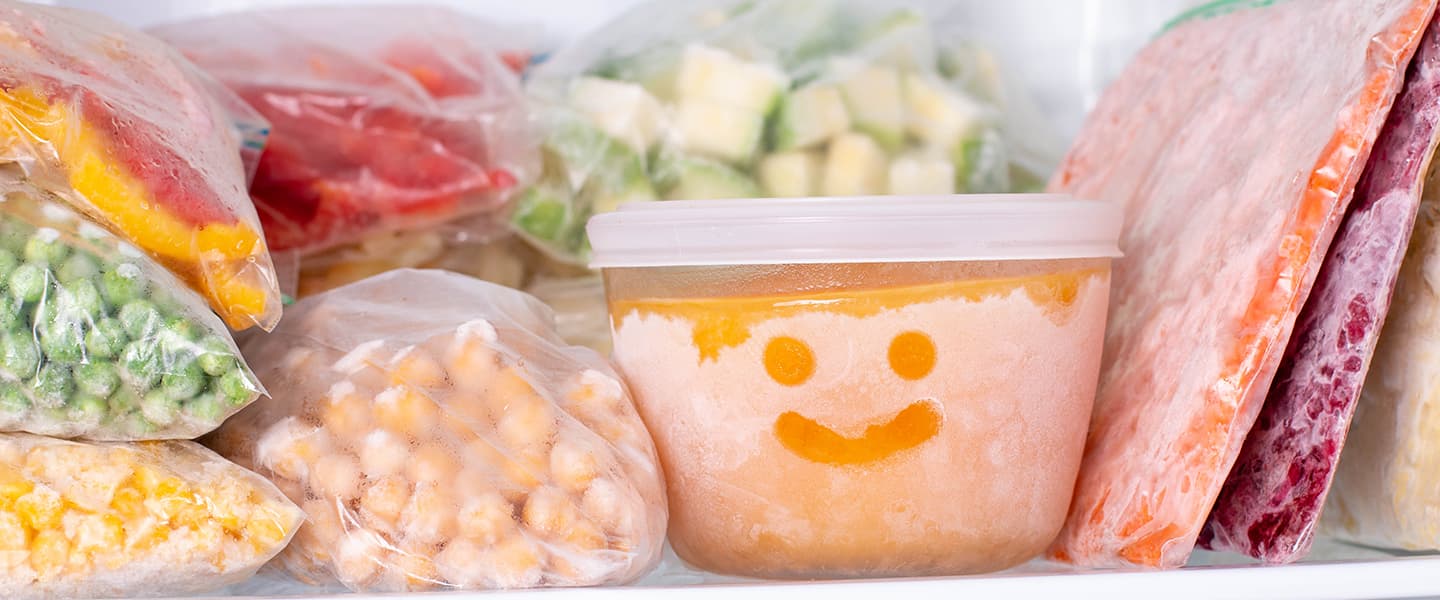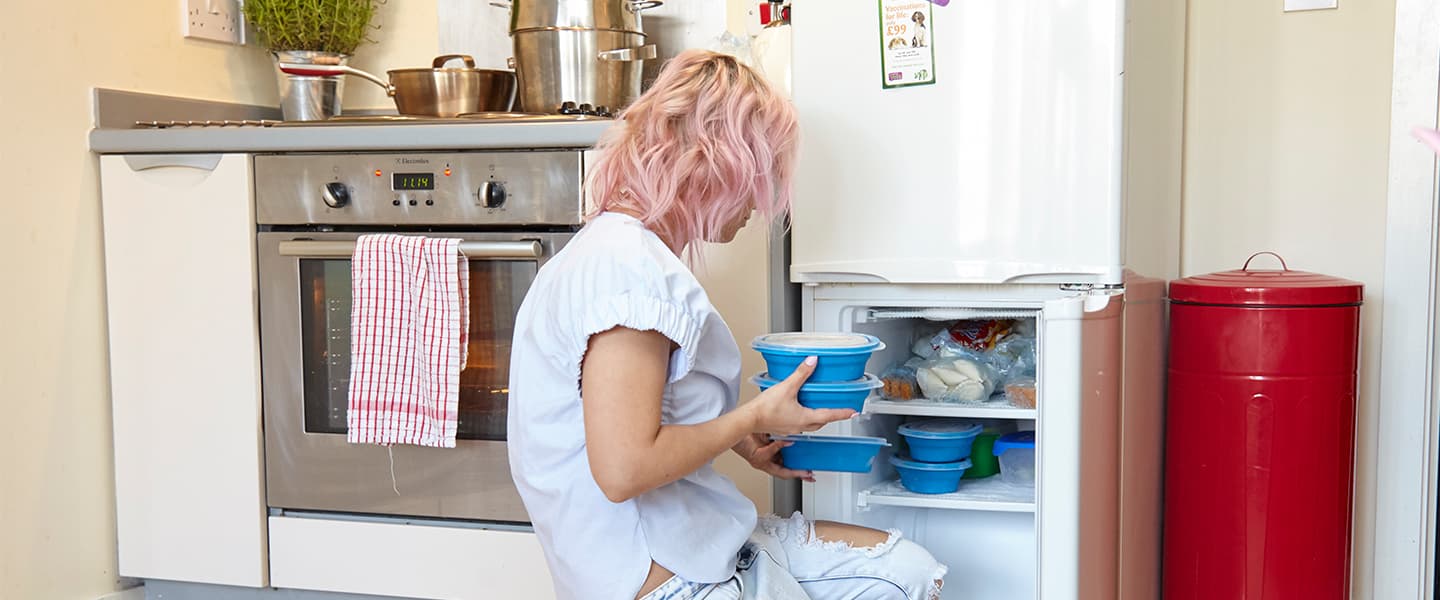5 freezing myths debunked
In a flummox about freezing? Don't worry. We’ve done some research to help debunk common freezer myths!
These tips are part of something bigger. At Hubbub, we want to see a world where everyone makes choices that are good for the environment. Check out what we do and how your actions add up.
1) Frozen foods are less nutritious
Not true. Frozen fruit and veg tend to be picked and frozen at the time of their peak ripeness – also their peak nutritional levels. Nutrient levels in frozen produce do inevitably decrease over many months, but overall they sure give fresh produce a run for its money.
2) Fridges and freezers are expensive to run
These are usually switched on 24 hours a day, 7 days a week, so it's well worth finding models that are energy efficient. Look out for the appliance’s energy rating and make sure you buy one that’s the right size for your needs. Fridge freezers are tested for how much energy they use during typical use. They're then given a rating on a scale of A to G, with A being the most efficient product, and G being the least efficient.
3) Freezing food reduces its quality
Not if you do it right. Air coupled with moisture is the enemy of frozen food; ice crystals are the tale-telling sign of freezer burn. Extracting air from packs, using tupperware to seal the deal and reducing the surface area exposed will see your goods through their hibernation. Smalls foods with large surface areas are most affected.
4) There are lots of things that you can’t freeze
Most things are easily frozen. However, there are just a few to avoid: fine vegetables practically disintegrate, whilst frozen creams are prone to curdle whilst thawing. Freezing canned foods, fizzy drinks and eggs in their shells is a no and coffee can absorb freezer smells as its oils break down in the process. As for the rest? Full freeze ahead!
5) You can't refreeze frozen food
Refreezing food isn’t dangerous, the danger is that food can spoil before it’s been refrozen. Freezing food does not kill bacteria, it just ‘freezes’ its action, so to speak. So once thawed, bacteria continue to multiply at the same rate it was multiplying before being frozen. Use our toss, freeze, cook guide to stay safe with freezer food.
Toss if:
- Temperatures went above 4°C, the temperature range in which food-borne bacteria can grow (roughly 4 to 60 °C).
- It smells funny, trust in your senses.
- You have any doubts.
Refreeze if:
- Temperatures are still below 4°C. Food should not have been kept out of the freezer for more than a couple of days, especially when it comes to meat.
- Thawed fruit doesn't smell bad or have any signs of mould. They will be softer, but they won’t be off. It takes a long time for fruits to ferment and you usually know about it when they do!
- Vegetables are still solid and icy. If they have thawed do not refreeze, your nose may tell you this.
- Food is baked. Trusty old baked goods are pretty dry and therefore don’t change much in the freezer.
Cook if:
- Raw meats are thawed, are still cold (under 4°C) but not icy. These can then be frozen after being cooked properly.
- Prepared foods have defrosted. The quality of the food is likely to deteriorate and it’s best to be on the safe side with mixed food groups in one dish.
- Raw fish and shellfish should smell of the ocean, but nothing else. Once cooked you can refreeze after but be sure to freeze it as soon as possible after cooking. Do not refreeze raw fish and shellfish. This is because it takes time to refreeze, time that bacteria can use to keep growing and it will take more time to thaw and cook before you eventually eat it.
Hungry for more?
If food waste were a country, it would be the third biggest polluter in the world. Find out how our campaigns have been shifting behaviours to take a bite out of the problem.
We do more than food.
Ever wondered what to do with your old clothes, or how to make your smartphone last longer?

